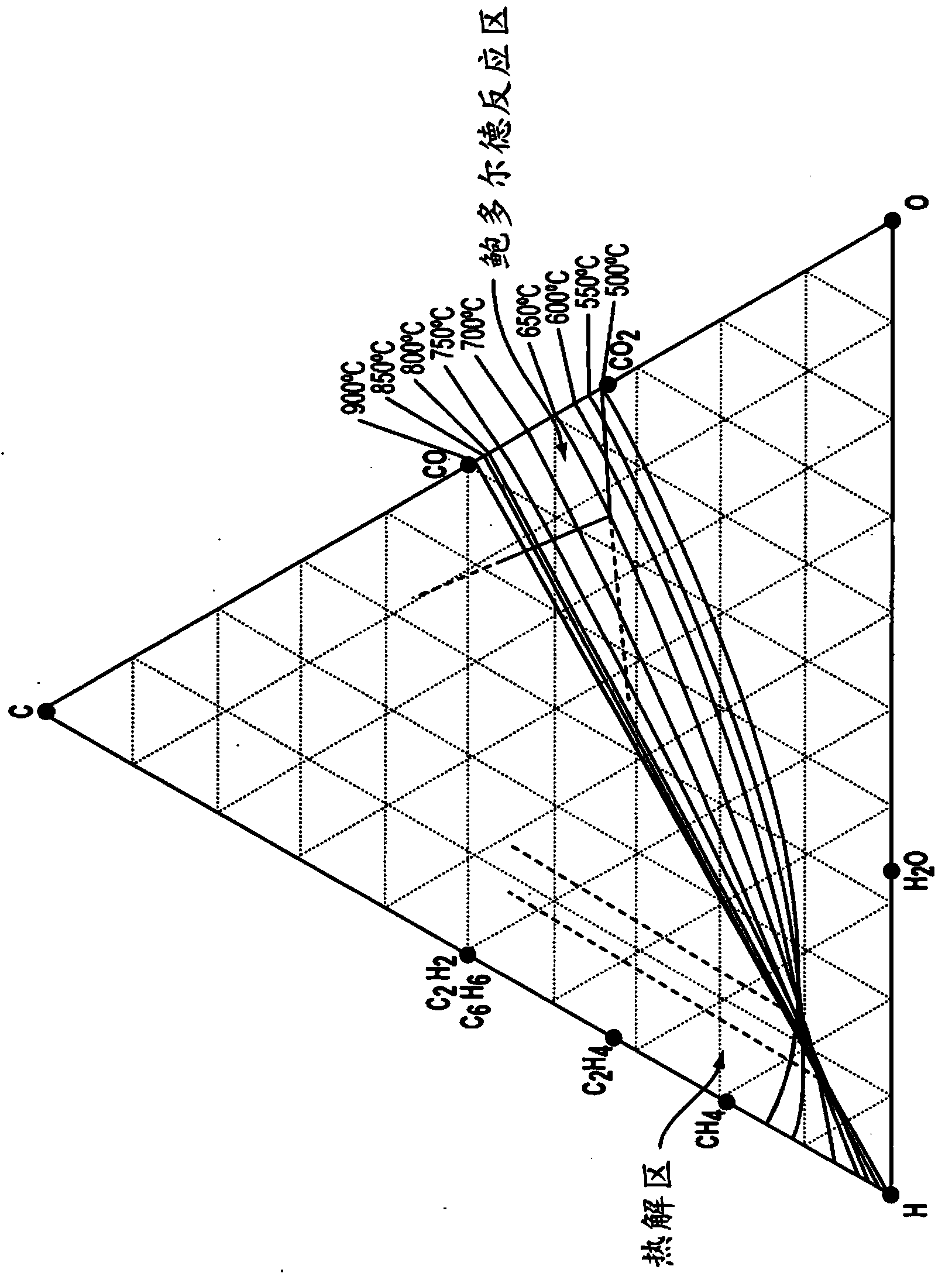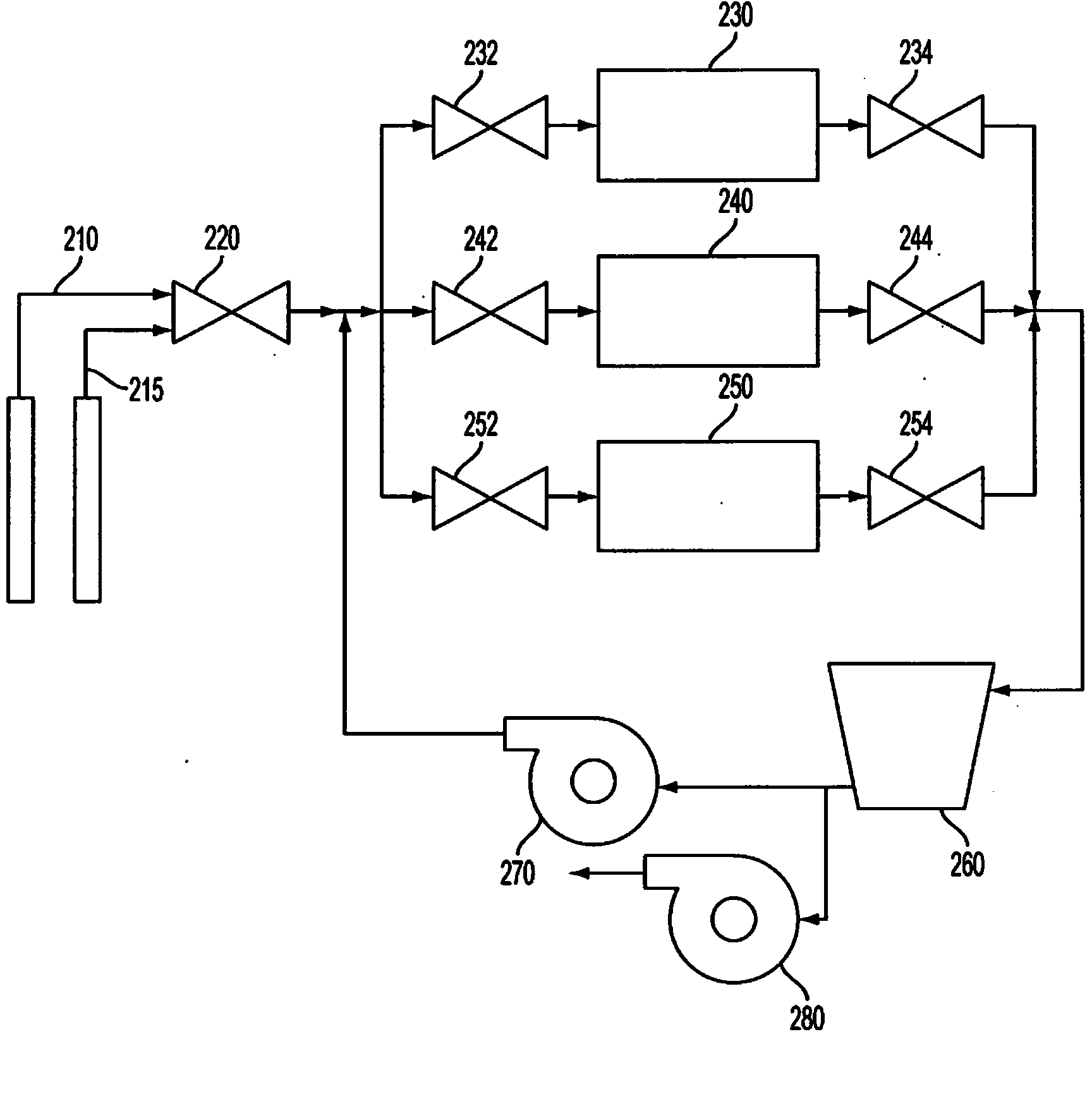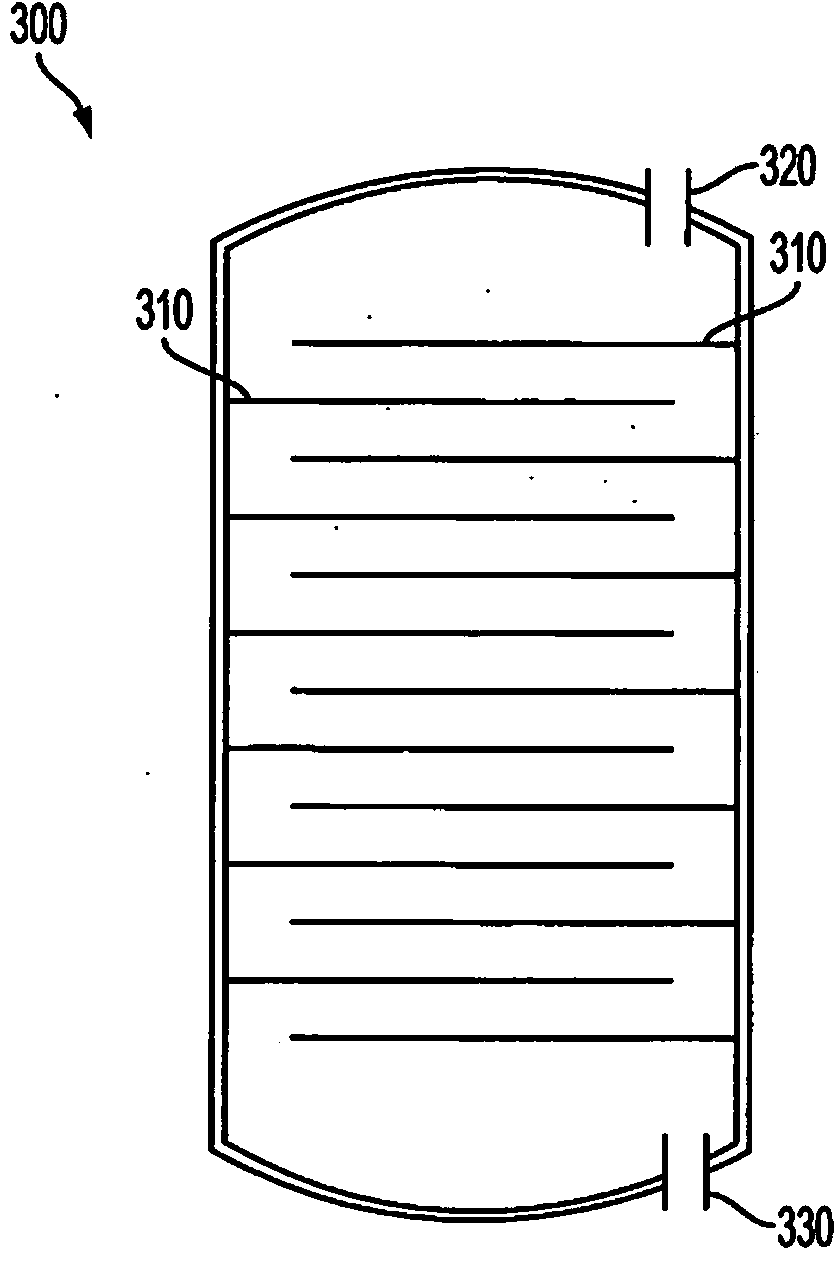Methods for using metal catalysts in carbon oxide catalytic converters
A technology of metal catalysts and carbon oxides, applied in metal/metal oxide/metal hydroxide catalysts, chemical instruments and methods, physical/chemical process catalysts, etc.
- Summary
- Abstract
- Description
- Claims
- Application Information
AI Technical Summary
Problems solved by technology
Method used
Image
Examples
Embodiment 1
[0171] A mild steel disc sample with extensive red rust spots was used as catalyst. A mild steel disc is positioned in the tube furnace 1 at about the centerline. The vacuum pump 5 was started and helium was used to purge the experimental apparatus for five minutes. Five minutes later, the vacuum pump 5 was turned off, the compressor 3 was turned on, the refrigerated condenser 4 was turned on, and the helium flow continued until the pressure reached 90.6 kPa (680 Torr), at which point the gas flow was turned off. The heating elements of the tube furnace 1 are then switched on.
[0172] When the furnace 1 temperature reached a temperature of 680° C., the vacuum pump 5 was turned on and the experimental apparatus was purged for five minutes with a reaction gas in a stoichiometric mixture of carbon dioxide and hydrogen delivered from the gas supply 6 through the mixing valve 7 . After five minutes, the vacuum pump 5 was switched off. When the experimental apparatus reached a p...
Embodiment 2
[0175] The quartz disk was placed flat in the 304 stainless steel disc used as catalyst. The wafer is positioned in the furnace 1 at about the centerline. The experimental apparatus was helium-purged as in Example 1 and heated. Reactive gases were added and circulated for another hour at a temperature of 680° C. and a pressure between 85.3 kPa (640 Torr) and 101.3 kPa (760 Torr), as in Example 1 .
[0176] After the furnace 1 had cooled, the stainless steel samples were removed from the furnace 1 . CNT mats are grown between quartz and stainless steel discs. A portion of the CNT mat is bonded to quartz and stainless steel surfaces. Figure 9 show samples at 10,000x magnification, and Figure 10 Sample shown at 100,000x magnification. The size of the CNTs (tens to hundreds of nanometers in diameter) indicates that they may be multi-walled CNTs.
Embodiment 3
[0178] 316L stainless steel discs were used as catalysts. A 316L stainless steel disc was placed in Furnace 1 at about the centerline. The experimental apparatus was helium-purged as in Example 1 and heated. Reactive gases were added and recirculated for one hour as in Example 1, but at a temperature of 700°C and a pressure between 93.3 kPa (700 Torr) and 97.3 kPa (730 Torr).
[0179] The stainless steel discs were removed from the furnace 1 after the furnace 1 had cooled. Figure 11 is a photo of a stainless steel disc. Carbon nanotubes grow on only a portion of the wafer. The reason for this condition is unknown. Figure 12 an image showing an area of a CNT forest on a wafer at 2,500x magnification, and Figure 13 Image showing the same area of the CNT forest at 10,000x magnification. The diameter of the tube indicates that it may be a multi-walled CNT.
PUM
| Property | Measurement | Unit |
|---|---|---|
| particle size | aaaaa | aaaaa |
| length | aaaaa | aaaaa |
| length | aaaaa | aaaaa |
Abstract
Description
Claims
Application Information
 Login to View More
Login to View More - R&D
- Intellectual Property
- Life Sciences
- Materials
- Tech Scout
- Unparalleled Data Quality
- Higher Quality Content
- 60% Fewer Hallucinations
Browse by: Latest US Patents, China's latest patents, Technical Efficacy Thesaurus, Application Domain, Technology Topic, Popular Technical Reports.
© 2025 PatSnap. All rights reserved.Legal|Privacy policy|Modern Slavery Act Transparency Statement|Sitemap|About US| Contact US: help@patsnap.com



